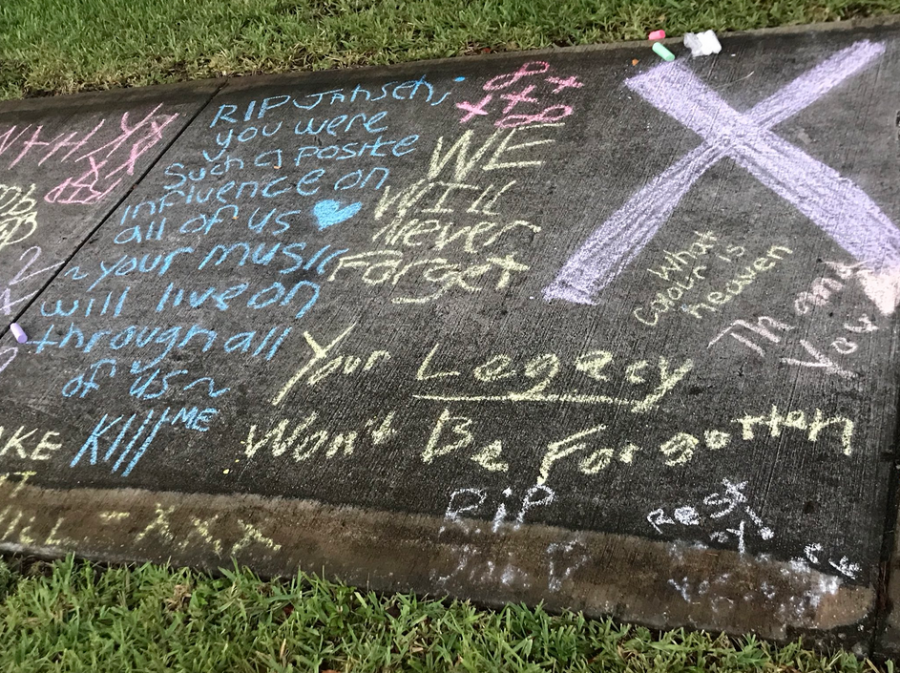Introduction
May 30, 2019
A memorial to XXX Tentacion is scrawled in chalk on the sidewalk. Picture taken from Wikimedia Commons.
“Hip-hop’s emergence drew the attention of people outside the urban neighborhoods where it arose, and during the 1980s and 1990s, the recording industry turned hip-hop into big business.” – Michael P. Jeffries “Thug Life”
Hip-hop originated in urban black and Latin American neighborhoods experiencing poverty in the 1970s, most notably, the South Bronx in New York City (Britannica). Many city residents like those in Chicago, Detroit, and Philadelphia found themselves jobless in the face of deindustrialization because companies started moving low-skill manufacturing jobs to countries like India where labor was cheaper (Oware).
Unemployment, declining social services and rising crime rates plunged these urban communities into poverty (Oware). Hip-hop was created as a way to express frustrations about the lack of education and job opportunities for inner-city minority communities. The genre found its footing in American culture live – DJs, MCs, rappers, and break dancers used their streets as a stage to speak out about the economic injustice they experienced (Jeffries 1).
Consequently, common themes in hip-hop are nihilism about the future and ongoing violence (Kubrin 441). Scholars researching inner-city culture in relation to rap music commonly identify that “young people bereft of hope for the future have made their peace with death and talk about planning their own funerals…The high death rate among their peers keeps many from expecting to live beyond age twenty-five” (Anderson 135).
However, “hip-hop’s emergence drew the attention of people outside the urban neighborhoods where it arose, and during the 1980s and 1990s, the recording industry turned hip-hop into big business” (Jeffries 1). Today, hip-hop has grown beyond racial and experiential boundaries. The market is currently worth over 10 billion dollars and hip-hop makes up 31% of the total revenue generated by the music industry (Watson) (Wang).
Currently, four major record labels – Sony Music Entertainment, Electric & Musical Industries Limited, Universal Music Group, and Warner Music Group – control 86% of the industry by having smaller, independent labels as subsidiaries (Jeffries 3). Hip-hop’s popularity spread outside of the communities that created them and changed to become a genre that glorifies money, drugs, and violence.
